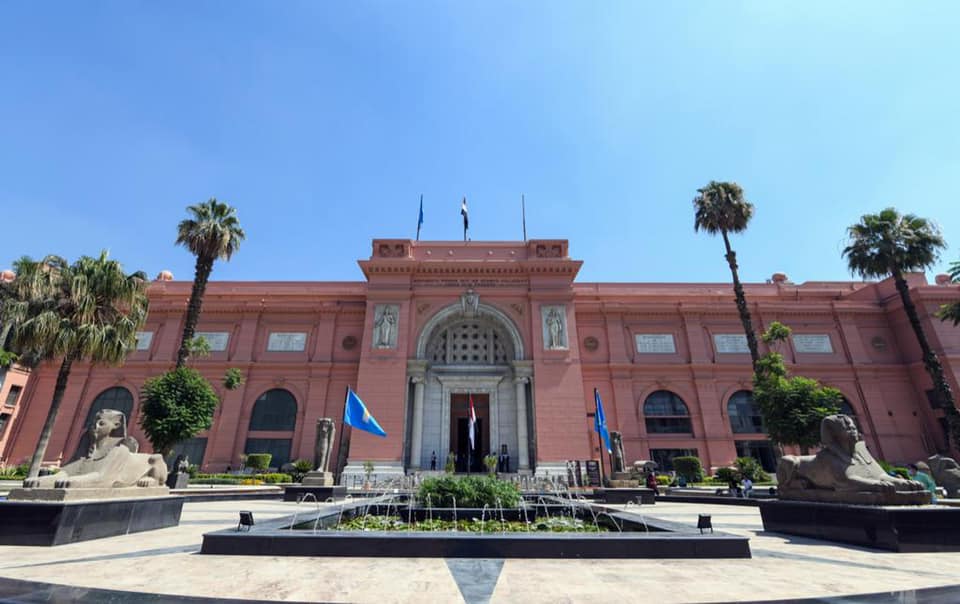MP questions government after 3,300-year-old gold bracelet vanishes from Egyptian Museum in Tahrir
By Al-Masry Al-Youm
Copyright egyptindependent

Parliament Member Maha Abdel Nasser, from the Egyptian Democratic Party, submitted a parliamentary question to the Prime Minister and the Minister of Tourism and Antiquities regarding the disappearance of an ancient archaeological bracelet from inside the conservation laboratory at the Egyptian Museum in Tahrir.
The bracelet, dating back more than 3,300 years, belonged to royalty of the Twenty-first Dynasty from the eastern part of the country.
In her question submitted on Thursday, Abdel Nasser said, “We followed with great regret in the past hours the statement from the Ministry of Tourism and Antiquities, which announced and confirmed the loss of a rare archaeological piece from the conservation laboratory located in the Egyptian Museum in Tahrir.”
Abdel Nasser stated, “Despite the many dimensions of this incident and the questions it raises, the seriousness of this incident—especially as Egypt prepares to open one of the largest museums in the world, the Grand Egyptian Museum—is a real test of our ability to secure our national heritage and manage it according to the highest international standards. It presents a potentially inaccurate image of the mechanisms for protecting and preserving Egyptian antiquities and artifacts.”
“The loss of an archaeological piece from inside a dedicated conservation laboratory, a place that is supposed to be the most fortified and secure for artifacts, raises fundamental questions about how the piece could have been leaked or stolen. This forces us to re-evaluate the effectiveness of security, oversight, and monitoring mechanisms inside museums, laboratories, and archaeological storage facilities throughout the Republic in general.”
She noted that the Egyptian Museum in Tahrir is a major center for conservation and archival expertise within Egypt.
Therefore, any security or administrative failure there raises concerns about the safety of other archaeological sites and storage facilities across the nation.
“While forming investigative committees and referring the incident to the Public Prosecution is a necessary step, the deeper question relates to the root causes that allowed the incident to occur. For instance, was the failure in the organizational procedures? Was it in the human element? Or was it in the technical systems for monitoring and documentation?”
Abdel Nasser questioned the efficiency of the current inventory and documentation systems.
“Are they comprehensive electronic systems that allow for precise tracking of every piece? Are these systems subjected to regular and independent reviews? Are there plans to develop them to keep pace with the opening of the Grand Egyptian Museum?”
She expressed her worry that this incident raises concerns about the physical and digital security mechanisms adopted inside laboratories and storage facilities.
“We still do not know if surveillance cameras are operating efficiently and if their records are fully preserved. Are there multi-level verification systems during transportation and conservation processes? Are specialized training programs implemented for workers to enhance their awareness of responsibility and prevent complicity or negligence?”
The Parliament Member emphasized that these questions are inextricably linked to Egypt’s international reputation.
“The world is watching the opening of the Grand Egyptian Museum as a global cultural event, and any incident of this nature, whether true or not, could affect the international community’s confidence in our ability to manage and protect our heritage,” she warned
Therefore, she stressed that more is required than just uncovering the truth behind this incident or to take exceptional measures after the fact. Instead, the government must establish a permanent and integrated system that is transparent, holds workers and leaders accountable, and allows parliament and the public to be confident that the government is fulfilling its complete role in protecting its heritage and antiquities.
Abdel Nasser concluded by demanding that the government provide clear and detailed answers to the following questions:
When was the disappearance of the bracelet discovered? What steps have been taken from the moment of discovery until now?
Where are the weaknesses that allowed the piece to be removed or lost? Are there indications of complicity or administrative negligence?
What is the nature of the inventory, documentation, and security system inside the conservation laboratories and storage facilities at the Egyptian Museum? Is it electronic and connected to a central system?
Has this system been subject to recent independent reviews or development? What is the timeline for its update before the Grand Egyptian Museum’s opening?
What additional security measures will the government implement to ensure that the theft or smuggling of archaeological pieces and artifacts from Egypt does not happen again?
What are the mechanisms for coordination with competent authorities (customs, police, Interpol) to track and recover archaeological pieces in general when smuggling is suspected?
Edited translation from Al-Masry Al-Youm



